Articles de la rubrique "Bookkeeping"
Solved The unit product cost is the same as the Blank______ Multiple 1 Answer
To calculate the cost of a unit, divide the total cost (including relevant expenses) by the total number of units produced or purchased. Strategically leverage economies of scale by optimizing production volumes. Bulk purchasing and higher production quantities often lead to lower costs due to the spreading of fixed expenses.
Production volume and capacity utilization
For example, if an electronics manufacturer purchases microchips for its products, the direct cost of a unit would include the cost of each microchip. Unit cost is the price a business pays for each unit of a product or service when buying, selling, or storing it. Besides being crucial in shaping procurement strategies, it also helps forge mutually beneficial partnerships with your vendors. The metric holds the key to optimizing procurement decisions and negotiating contracts.
It guides decisions on budgeting, forecasting, and figuring out where to cut excess spending. Companies keep track of both variable costs that change with production levels and fixed costs that stay the same no matter how many units are made. The analysis focuses on variable costs, potentially overlooking fixed costs that remain constant irrespective of production volume. Maintain a comprehensive record of all production, procurement, and operational costs.
Effective budgeting and forecasting hinge on accurate cost estimation. The analysis provides the foundation for creating realistic budgets and projections. It allows you to anticipate expenditures and revenue streams with greater precision.
Unit Cost Meaning
It includes expenses like raw materials and direct labor costs, which change as production levels change. You use a large industrial oven and one assembly-line-style machine to produce your granola. The cost to have your machines up and running on any given day is $50. This includes maintenance and repairs and other incidentals, once again divided over a year.
Understanding Unit Product Cost
In B2B relationships, understanding the cost of a unit empowers you to negotiate better terms with suppliers. The knowledge of unit cost of production will help you confidently engage in contract negotiations and secure favorable pricing arrangements. Cost of unit plays is crucial in the strategic operations of businesses across industries.
Limited in strategic decision-making
- Providing financial data inside the company to managers, owners, and employees.
- To find this number, all production costs get added up and then divided by the total items made.
- For example, in software development, the cost analysis factors in coding time, testing efforts, and potential licensing fees.
The unit product cost is the cost of producing one unit of a product, while the total product cost is the cost of producing all units of a product. The total product cost is calculated by multiplying the unit product cost by allowance for doubtful accounts the number of units produced. Fixed cost per unit is the portion of fixed costs attributed to each unit produced. You can calculate it by dividing the total fixed costs by the total number of units. Scenario analysis helps assess the impact of changes in variables like input prices, production volumes, and market demand on the cost of a unit. If a company produces more units than it sells, the remaining units end up in the finished goods inventory.
In the retail industry, unit price plays a significant role in attracting customers and driving sales. Retailers need to set competitive prices that align with customer expectations and market trends. By considering the unit cost, retailers can determine the appropriate markup or margin to ensure profitability. They may also use pricing strategies such as promotional pricing, volume discounts, or bundle offers to influence customer purchasing decisions. In the manufacturing industry, understanding unit cost is crucial for optimizing production processes and managing expenses. This knowledge helps them make informed decisions about pricing, ensuring profitability while remaining competitive.
Relation Between Unit Product Cost and Average Product Cost Per Unit
Accurate cost tracking provides a solid foundation for the cost analysis process. In the service sector, the cost of a unit translates into the price of delivering a single service. It includes employee wages, time spent, and overhead costs related to service provision. Understanding the cost of a unit assists service providers in evaluating service packages and setting pricing.
It often aggregates various cost components into a single figure, ignoring nuances and intricacies within different cost categories. Streamline processes, reduce waste, and explore technology-driven solutions to lower labor and time requirements. Effective supplier collaboration can lead to favorable terms, discounts, and stable pricing, influencing costs positively.
Incomplete allocation methods
Insurance, electricity, your permit to produce food and the mortgage on your production facility also need to be accounted for. Since it only takes you one day to produce one batch of peanut butter granola, this figure is fairly easy to calculate. On the other hand, unit price refers to the price at which a single unit of a product or service is sold to customers. It represents the amount of money a customer needs to pay to obtain one unit. Unit price is determined by considering various factors, including production costs, market demand, competition, and desired profit margin. Income differs between the two methods when the inventory levels change, and the inventory level will change when units produced do not equal units sold.
- Affected by economies of scale, it may decrease as production volume increases.
- This crucial metric serves as a vital indicator of both production efficiency and cost management within any business relying on tangible goods.
- With both methods, the finished goods inventory is zero, and there are no manufacturing costs that are included in inventory accounts.
- A clear grasp of these costs provides valuable insights to guide strategic choices.
- Unit price is determined by considering various factors, including production costs, market demand, competition, and desired profit margin.
- Bulk purchasing and higher production quantities often lead to lower costs due to the spreading of fixed expenses.
Avoid underpricing, which can erode profitability, and overpricing, which can deter customers. Regularly review and update your calculations to reflect changes in input prices, production volumes, and market conditions. Timely analysis helps identify trends, anomalies, and areas for improvement. For example, a rise in the raw materials cost can lead to an increase in the cost per unit. Strong supplier relationships can help negotiate favorable terms, stabilize prices, and secure discounts.
Unit Cost is the total cost (fixed and variable) incurred by the company to produce, store and sell one unit of a product or service. This concept is operating leverage formula: 4 calculation methods w video most commonly used in the manufacturing industry and is calculated by adding fixed and variable expenses and dividing it by the total number of units produced. If all you will be producing are T-shirts, you can determine a general cost per shirt in the same way you calculated the unit product cost for the local bank’s order in the above example. You will still need to know your factory’s overhead costs, the cost of your materials and the price you will pay for labor. These three components are always necessary for determining your cost pool.
It is more than just a numerical value; it helps you bookkeeping business names get insights that help with informed decision-making and strategic planning. When calculating your overhead, you should only include things directly related to manufacturing. For instance, in the examples above, the cost to run the granola oven and the insurance needed to operate the plant were included. However, the cost to market your granola or to hire an administrative assistant were not included. As they are not correlated directly with your production by unit, it is best to exclude any administrative costs of this nature.
Catégorie: Bookkeeping | Tags:
Burn Rate: What Is It and How to Calculate It Blog FAQ 2024 Edition

When refinancing, negotiate more favorable terms such as lower interest rates, longer repayment periods, or reduced fees. Reducing the need to spend more on customer acquisition improves the efficiency of the company’s sales and marketing efforts. A typical goal is to have months of runway so that the startup can operate without running out of cash. On the one hand, a high burn rate not accompanied by rapid growth may dissuade investors or prompt them to set strict deadlines for the startup to become profitable. In this guide, we’ll go over burn rate, why it’s important for entrepreneurs and investors, and how to increase revenue without increasing expenses.
- Burn rate is calculated by comparing your cash balance at the start versus the end of the period and then dividing that difference by the number of months.
- To avoid late payments, invoice your customers on time and send reminders before payments are due.
- The result here indicates the burn rate is greater than one and so the project is over budget.
- Since the cash burn is also $10,000, we can easily say that Ding Dong is not in a very good position.
- However, there are likely areas where the company can right-size spending.
- By avoiding these mistakes, startups can ensure they can achieve long-term success.
Try bootstrap marketing
Burn rate measures the rate at which a company is spending its capital, typically measured on a monthly basis. It is an essential financial metric for startups and early-stage businesses, as it provides insights into their cash flow and financial stability. A company’s ability to manage its burn rate is crucial in determining its long-term success and growth potential. A nuanced understanding of the burn rate requires distinguishing between gross and net burn rates.

What Is Burn Rate, and How Do You Calculate It?
Dividing cash on-hand by the burn rate gives the number of months before the business runs out of what is the formula for determining burn rate cash. As an example, if a company has $100,000 in cash and is spending $10,000 a month, its cash runway is 10 months. After that time, barring corrective action, the company will be out of business. The business’s cash on-hand consists of all its bank deposits, petty cash, negotiable securities and other liquid assets. It’s not strictly necessary to know cash on-hand to calculate burn rate.
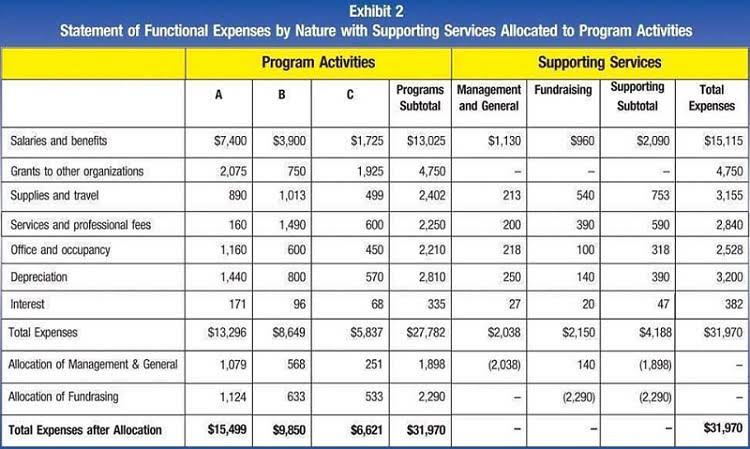
Re-evaluate your recurring costs
There would be no way to keep your burn rate low if you leased and retrofitted normal balance a building on your own. That number tells you that, without any changes in income or expenses, you have enough money to pay your bills for 50 months. That number tells you that, without any income or changes in expenses, you have enough money to pay your bills for 10 months. Burn rate gives investors like the sharks a timeline for when your business will run out of money.
Goal Setting Fundamentals: Objectives and Key Results (OKRs)
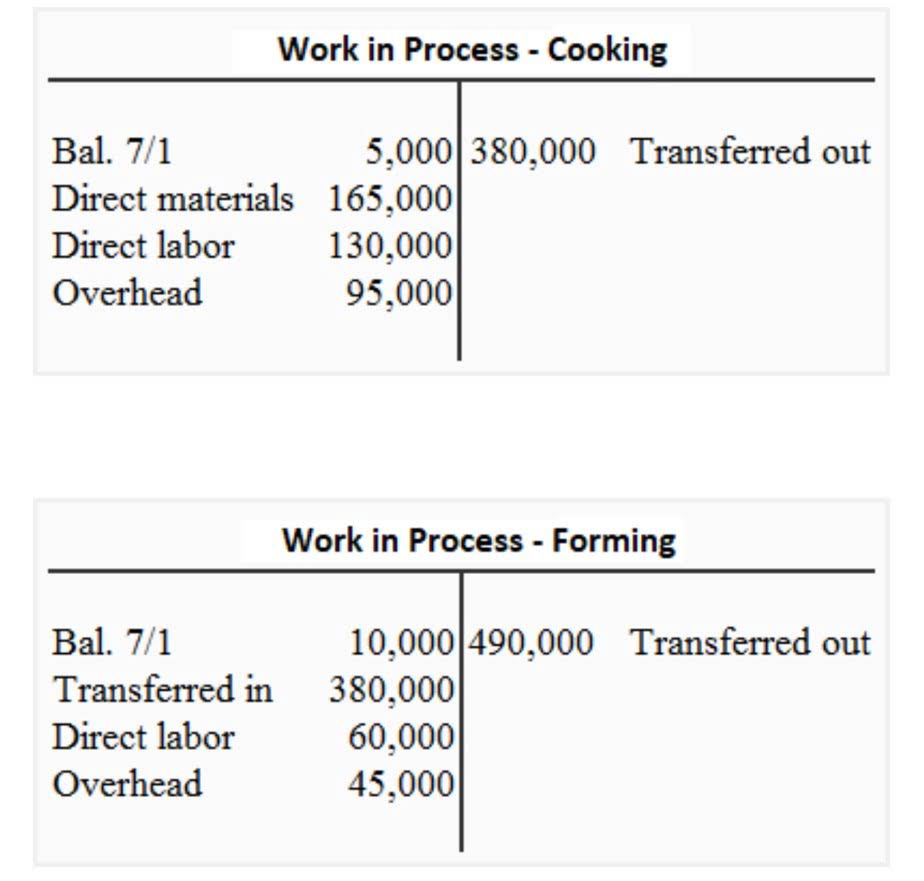
You should look at burn rate as it relates to cash runway, CAC, churn, and overall financial projections. A burn rate calculator is an invaluable tool for businesses, as it allows them to estimate the amount of money they spend each month. By inputting variables such as revenue, expenses, and available capital, companies can gain insight into their financial health and take necessary steps to adjust their spending habits. Using a burn rate calculator consistently can help identify trends and ensure that a business stays on track.
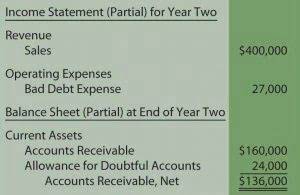
It accounts for how much money you have on hand and what you’re spending, and it’s a good way to spot potential cash flow issues before they become a serious problem. In conclusion, employing financial tools like a burn rate calculator, financial modeling, and valuation enables businesses to manage their burn rate effectively. These tools provide insights into financial health, facilitate informed decisions, and ultimately contribute to increased company value. By leveraging these financial tools, Cash Flow Management for Small Businesses companies can ensure a stable financial future and pave the way for growth and success.
Catégorie: Bookkeeping | Tags:
FICA and Withholding: Everything You Need to Know

100–647, §8016(a)(4)(A), (C), inserted « (other than service described in paragraph (3)(A)) » after « service ». 100–647, §1011B(a)(22)(A), added subsec. (x) relating to benefits provided under certain employee benefit plans. Record Keeping for Small Business (l)(3). 101–239, §10201(a)(2), (3), added par.
- (1) to (5), respectively.
- Employers are responsible for withholding this amount and deducting a percentage of their own revenue to contribute to FICA taxes.
- 612, which is classified principally to chapter 34 (§2501 et seq.) of Title 22, Foreign Relations and Intercourse.
- There’s no wage base limit for Medicare tax.
- Strictly speaking, FICA taxes consist of two parts since they’re used to fund two different programs.
(c) Qualified family leave wages
- (D) the wages of each member, upon which such order or subdivision shall pay the taxes imposed by sections 3101 and 3111, will be determined as provided in subsection (i)(4).
- 94–455, §1903(a)(1)(A), redesignated pars.
- 90–248, §109(b)(2), struck out par.
- FICA now allows taxpayers to enjoy direct benefits that are funded through payroll taxes.
- Amendment by section 317(c)(1), (2) of Pub.
- (l)(2) to (5).
Most employees cannot opt out of paying FICA taxes as they are mandatory. However, specific groups with religious or moral objections to public insurance may be exempt if they meet stringent IRS criteria. For employers, once the FICA definition has been squared away, you’ll need to determine exactly how much to deduct from each check. It’s simply a calculation based on the employee’s gross pay for each pay period. So if your employee grossed $500, you’ll multiply $500 by 6.2 percent to get the amount to deduct from that employee’s pay. You’ll also need to match that amount from your own funds.
Effective Date of 1961 Amendment
116–136, which is set out as a note under section 3111 of this title. (c)(1). 101–239, §10204(b)(1)(E), inserted « (or, if the employer contribution margin is a partnership, each partner therein) ».

Missouri Income Tax Forms
« (B) So much of the taxes imposed under section 3221(a) of such Code as are attributable to the rate in effect under section 3111(a) of such Code. 112–56 applicable to individuals who begin work for the employer after Nov. 21, 2011, see section 261(g) of Pub. 112–56, set out as a note under section 51 of this title. 114–113 applicable to taxable years beginning after Dec. 31, 2015, see section 121(d)(3) of Pub. 114–113, set out as a note under section 38 of this title.

(C) Apprenticeship program contribution rate
Even if you’re an exempt worker who doesn’t have federal income tax withheld from your paycheck, you still need to pay your share of FICA taxes. This applies if you received a full refund on your federal income taxes last year and expect to have no federal income tax fica meaning liability this year. Per the Internal Revenue Service (IRS), Federal Insurance Contributions Act taxes comprise disability insurance, old age, and survivors taxes along with hospital insurance tax. Different tax rates apply to each of these two components. Former U.S. President, Franklin D. Roosevelt introduced this federal law in 1935. The purpose of this act was to reduce the government’s burden of making payments for the benefits offered by the Social Security program.
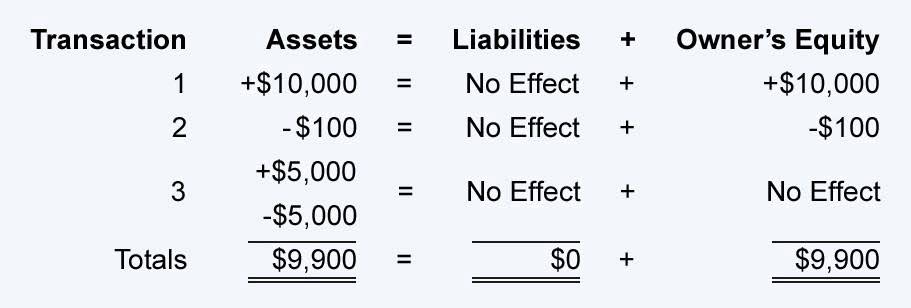
How can I learn more about my Social Security benefits?

They utilize Form 1040 to report the tax to the government and pay it. Self-employed persons must report their income in Schedule C or F of Form 1040 based on their business activities’ nature. The memo drafted by the Internal Revenue Service OCC offers guidance concerning programs that are marketed to different employers who purport to decrease FICA obligations by a significant margin. Note that such OCC memos are neither regulations nor laws.
Catégorie: Bookkeeping | Tags:
Electronic Fund Transfer Act: What It Is And How It Protects Consumers

E-checks are particularly advantageous for businesses that need to make bulk payments or manage recurring invoices, as they combine the convenience of digital transactions with the familiarity of checks. ACH is particularly beneficial for businesses that engage in regular payments, as it reduces administrative burdens and minimizes transaction fees compared to other methods like wire transfers. Reversing an EFT (Electronic Funds Transfer) depends on the type of transaction and how quickly the error is reported.
Role Of Financial Institutions In EFT (Electronic Funds Transfer)
If you decide to use a credit card to send a payment through a P2P app, do so cautiously. Credit card companies may view the transaction as a cash advance and charge a higher interest rate than if you used the credit card to make a purchase at a retailer. Electronic funds transfers may require a personal identification number (PIN), password, or some other verification method to unlock online account services.
- Processing speed can be helpful for businesses when it comes to paying suppliers or employees.
- For example, your direct deposits, payment app transfers, and online bill payments usually use the ACH network to conduct transactions.
- Reconciliation includes checking bank statements for accuracy and resolving any discrepancies with the financial institution.
- Wire transfers excel at speed and security for large, urgent payments, while standard EFTs offer lower costs for regular transactions.
- An ATM (automated teller machine) is an electronic terminal that allows you access to a bank almost anywhere at any time.
- Electronic Fund Transfer (EFT) is the transfer of funds from one bank account to another using electronic means.
Can I track the status of an EFT payment?
And once sent, funds from an erroneous or fraudster-requested wire transfer can’t be recovered because wire transfers are final. Wire transfers are used as a type of EFT to transfer funds via the Fedwire or SWIFT network. Both domestic and international wire transfers usually have higher fees than ACH.
BY BUSINESS OUTCOME
- Electronic Fund Transfer, or EFT, is the electronic transfer of money between different bank accounts with no paper form like cheques or cash involved.
- EFT (Electronic Funds Transfer) also helps reduce administrative costs and fraud, providing transparency and traceability.
- Cash and check transactions are still accepted in most banks and post offices, but the ease and speed of electronic transfers is increasing their popularity.
- Part of the FedACH system, FedGlobal ACH offers low-cost and efficient cross-border ACH payments.
- Even as technology advances, the acceptance and the usage of EFT are expected to grow, revolutionizing the way traditional banking systems work.
To deposit a paper check into a Fidelity account, you can upload a photo of the check to the Fidelity Mobile App, or deposit it directly at a local Fidelity investor center. You can also withdraw money from your Fidelity account and have it sent via a paper check that’s mailed to you or another recipient. If you request to have a check sent to you or someone else, the check takes about 5 to 6 business days to process before it’s mailed. Whether it’s paying bills, sending money to friends or even making online purchases, the EFT system can handle it all.
Unauthorized EFTs include transfers initiated by a person who obtained a consumer’s access device through fraud or robbery and consumer transfers at an ATM that were induced by force. The amount of time it takes for an EFT to be processed in Canada can vary depending on a number of factors. Some banks may have longer processing times, and the time it takes for an EFT to be completed can also depend on the specific circumstances of the transaction. Under Canadian law, financial institutions are required to report certain types of EFT transactions to FINTRAC.
The Benefits of EFT for Businesses

Other countries have similar frameworks such as PSD2 in the European Union. Compliance ensures that EFT (Electronic Funds Transfer) systems are fair, secure, and transparent, helping to protect users and maintain trust in electronic payments. Another key benefit of Accounts Payable Management EFT payments is that they are often faster than other payment methods. Processing speed can be helpful for businesses when it comes to paying suppliers or employees.

So if you’re planning on using P2P payments for something QuickBooks significant like rent or tuition payments, check what fees might apply first. If you’ve noticed an unauthorized transaction, call your financial institution to report it. The Consumer Financial Protection Bureau (CFPB) also recommends that you follow up with a written letter describing the transaction and keep a copy of it for your records. There are no limits to how much money is protected in a single transaction.
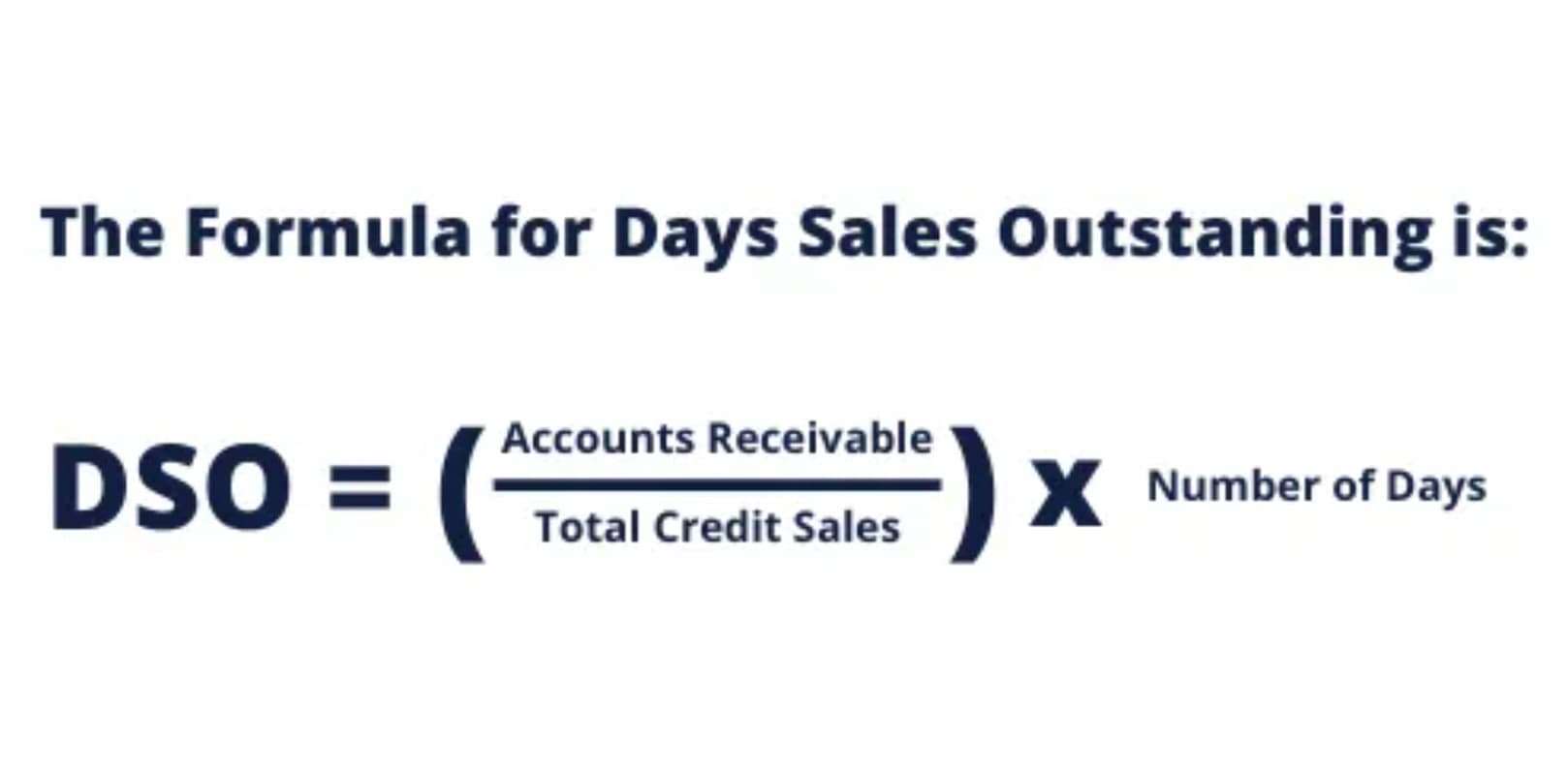
International EFT (Electronic Funds Transfer) solutions have also evolved to support mobile remittances and real-time payments in select countries. An EFT (Electronic Funds Transfer) works by transmitting payment instructions between banks through electronic means. what is an eft These networks authenticate the sender’s account, ensure adequate funds, and then transfer the money to the recipient’s bank. Whether it’s a direct deposit, online bill payment, or ATM withdrawal, all EFT (Electronic Funds Transfer) processes operate in real-time or within a few hours depending on the network’s capabilities.
Catégorie: Bookkeeping | Tags:
Small Business Guide to Retail Accounting
For example, if you buy collector’s sets of chess for $75 each and sell them for $100 each, the cost-to-retail percentage is 75 percent. Depending on the type of inventory you sell, you may be able to use the simpler retail method to calculate the cost of goods sold and the cost of your ending inventory. Take this number and subtract the sales total multiplied by the percentage, then subtract it from the cost of goods sold to get the ending inventory total. By having a well-defined return policy, your business will reduce losses and improve the customer experience.
Step 7: Calculate your estimate of actual COGS
Reorder points can be customized based on sales data, seasonal trends, and supplier lead times, making them a flexible tool for inventory management. While the inventory costing and retail methods have their strengths, the choice between them depends on your business’s needs. The inventory costing method offers more precision, which is crucial for companies with significant price fluctuations.
Manual Tracking vs. Automated Inventory Tracking
You can learn more about accounting methods by reading IRS Publication 538. Retail accounting helps you track the cost of goods sold and the cost of sales of your business. It’s a simpler way to track inventory allowing you to get an estimate of your inventory costs. An inventory system provides retail-based businesses a comprehensive account of available items and the monetary value of these inventory items. The cost of the inventory affects actual profit, and inventory in stock is considered an asset for the purposes of taxation and business valuation. Using the retail method of accounting, retailers use the projected retail cost to value the inventory.
How to Bake Success: Financial Insights for Bakeries
Establishing a clear protocol for verifying deliveries, checking for order discrepancies, and labeling new stock upon arrival reduces errors and improves overall efficiency. Use digital check-in systems, such as barcode scanning, to help record incoming inventory in real time. Don’t forget to train staff on best practices for receiving stock to minimize miscounts. Many business owners misunderstand retail accounting, thinking it’s all about bookkeeping. But in reality, retail accounting is an inventory management method that helps you track your stock, predict price changes, and ensure accurate cost calculations.
While it saves time by avoiding manual counting, retail accounting may offer less precise numbers compared to manual methods. Also, since it’s an estimate, it’s hard to give an exact figure using this technique. The weighted average method for valuing inventory is often used for items like hardware supplies, where individual items have different purchase prices but are hard to track separately. He has a CPA license in the Philippines and a BS retail accounting in Accountancy graduate at Silliman University.
- You can explore leading accounting software options in our review of QuickBooks Online and our review of Xero.
- However, cost accounting can be challenging because it involves many factors that store owners can’t control.
- We have also updated our confectionery sample, replacing some branded products and a bag of (non-chocolate) sweets with a bag of soft sweets and a bag of hard sweets.
- Qualitative forecasting relies on expert judgment, market research, and consumer insights to guide inventory decisions.
- Synder simplifies the reconciliation process, making sure all your financial data matches up correctly.
- This ending inventory at retail will be used later in Step 6 and serve as your beginning inventory at retail for your next period calculation.
- However, the process is delicate and requires thorough preparation so as not to corrupt your business operations.
Best Small Business Accounting Software 2025
- By conducting reconciliation regularly, you can detect issues such as theft, administrative mistakes, supplier errors, and inventory misplacements before they impact business operations.
- For example, your business purchased 50 bags of chips for $1 each, then at a later date, decided to buy 30 more, but the price rose to $2 each.
- Retail inventory tracking software also supports barcode scanning and RFID tag technology, so retailers can conduct quick and efficient stock audits.
- It simplifies everything from cost calculations to stock tracking, helping you avoid costly mistakes and stay ahead of the competition.
- Nutrien also makes internal equity a consideration in all pay decisions.
- Through the collective expertise of our nearly 26,000 employees, we operate a world-class network of production, distribution, and ag retail facilities.
The specific identification is another inventory costing method that tracks the cost of each item you have in stock by assigning a different price to each item, usually with SKUs. This method helps businesses keep track of every item in their inventory without grouping them. Time series analysis examines historical sales patterns to predict future demand, helping retailers adjust their inventory strategies accordingly. By identifying seasonal trends, cyclical behaviors, and long-term shifts, you can better anticipate customer needs. Retail stock management software automates this process using AI-driven analytics to recognize trends and generate accurate demand forecasts. With real-time data updates, you can improve order management by ensuring inventory aligns with sales projections, reducing waste and maximizing sales opportunities.
- Simulation forecasting uses advanced modeling techniques to evaluate different inventory scenarios, allowing retailers to test various demand and supply chain assumptions.
- It also improves our coverage of data processing and peripheral equipment.
- Numerous user-friendly accounting software solutions are specifically designed for retail businesses.
- Variances in inventory or sales volumes from these methods may be deductible, providing potential tax benefits.
- Reduce errors and discrepancies by comparing recorded and actual inventory levels and making sure that financial records align with physical stock.
Business Planning
Financial accounting involves the reporting, analyzing and outlining all of a company’s transactions (daily, weekly and monthly) in financial statements. These statements are often prepared for external use, to show the public —including investors, tax institutions, the government and banks—the financial health and performance of the company. The retail method can also help you keep account of the goods you’re buying or selling, know how much is left over, and maintain the right amount of inventory at all times. LIFO inventory costing is essentially the reverse of FIFO inventory costing. The LIFO method assumes the most recent items entered into your inventory will be the ones to sell first. This brings us back to inventory valuation methods, including retail accounting.
Catégorie: Bookkeeping | Tags:
What Is Retail Accounting? A Guide to the Retail Method of Accounting
We use this information to make the website work as well as possible and improve our services. The compensation offered to the successful applicant may vary based on factors including experience, skills, education, location, and other job-related reasons. Nutrien also makes internal equity a consideration in all pay decisions. Through the collective expertise of our nearly 26,000 employees, we operate a world-class network of production, distribution, and ag retail facilities. We efficiently serve growers’ needs and strive to provide a more profitable, sustainable, and secure future for all stakeholders.
How do retail stores keep track of inventory?
Use retail inventory tracking software to manage return workflows efficiently and reduce the impact of returned merchandise on profit margins. Consider implementing an automated return tracking system so that returned items are quickly processed, restocked when possible, or appropriately categorized for disposal. Through exceptional accounting software for retail businesses like Vencru, you can manage all the payments, labor charges, inventory stock, and keep an eye on your workers. It provides you with all the retail accounting solutions and helps you create a more efficient workflow. While retail accounting has pros and cons, technology like HashMicro’s retail accounting software paired with inventory management software quickly minimizes the drawbacks and maximizes the benefits.
The retail inventory management process
The FIFO method is especially useful for perishable items and is popular among food retailers because of its practical advantages. More specifically, in retail accounting, you’ve got to value all of your inventory at retail value and then subtract your sales to estimate your remaining inventory. This will also help you determine the markup on your items, which can be used to calculate how much inventory you have left after the sale. Retail accounting software can provide a comprehensive account inventory at the item’s retail price in order to detect losses, damages and theft of stock. This helps business owners to track the cost of sales (COS), also known as Cost of Goods Sold (COGS). For tax purposes, you want to use the inventory costing method which will give you the most accurate inventory valuation.
- Conducting cycle counts and spot checks reduces the likelihood of shrinkage and misplaced goods, which is crucial for keeping track of stock stored in large warehouses or across multiple locations.
- We suggest you entrust system migration to professionals to minimize errors and quickly restore the functioning of your business.
- Take time to learn how the features work, and you’re good to go for better accounting.
- If you’re looking for the best inventory management software to enhance your operations, explore the top options available to find the perfect fit for your needs.
- Understanding these pitfalls will help in deducing whether this method meets your business requirements.
- It’s a simpler way to track inventory allowing you to get an estimate of your inventory costs.
“The advantage is that it’s very easy to calculate and doesn’t require sophisticated tracking of how much someone paid for each SKU they purchased from a supplier,” says Abir. The weighted average method of inventory costing is often used when inventory is not perishable but stock can still easily be rotated or intermingled. Inventory is actually considered an asset — something your business owns, which is recorded on your business’s balance sheet — until you sell it or account for it as shrinkage from theft or damage. At that point, the expense for the purchase of the inventory is recorded as cost of sales (COS) or cost of goods sold(COGS) on your profit and loss statement. Consumer price inflation is the rate at which the prices of goods and services bought by households rise or fall.
Understanding Obsolete Inventory Definition Causes and How to Manage It Effectively
This statement summarizes all your revenues, costs of goods sold (COGS), and operating expenses over a specific period, revealing your overall profit or loss. In a retail setting, it’s your primary tool for assessing if that clearance sale or expanded product line is actually bolstering your bottom line—or just moving inventory without increasing profits. With the perpetual method, every time an item is sold or received, your inventory records update automatically. Unlike general accounting, retail accounting zooms in on how product costs, markups, and sales translate into profit. It’s about ensuring the numbers behind every sale–from a pack of yarn to a set of premium knitting needles–make sense and add up correctly.
- By using store inventory management software, you can streamline the receiving process and immediately update stock levels.
- He owns Genuine Communications, which helps CMOs, founders, and marketing teams to build brands and attract customers.
- This is especially useful for those retailers who have very high turnovers and maintain huge inventory.
- Net purchases include the items purchased and added to your inventory count during the current period.
- This popular method estimates the cost of ending inventory based on the average cost of goods sold throughout a specific period.
These tend to be used in conjunction with one another because they each provide a different approach to categorizing financial information. The retail method works only if the retailer’s markup on the inventory is consistent across their entire inventory. If items are marked up at different percentages, the retail method will not give you an accurate value of your inventory.
SKU Numbers Explained: How Retailers Can Use Them to Track Inventory and Sales
Every product, be it fasteners or a set of decorative stones, carries a constant 50% markup. At the beginning of the quarter, you restated your inventory, valued at its original cost of $100,000. Retailers will inevitably have a physical count at the end of the year. Since the retail inventory method is just an estimation technique, expect that there will be differences in the physical count and retail method estimations.
How Retail Accounting Software Can Help Your Business
Retail accounting estimates inventory value by assuming uniform pricing and consistent price changes. This simplifies calculations and reduces the need for physical stock counts. Retail accounting works best for businesses with stable pricing structures. Are you having trouble managing retail inventory costs and keeping your business running smoothly? Learning and using the right retail accounting techniques may be the solution you need. To help illustrate the above retail accounting approaches, let’s look at retail accounting an example.
This method helps you prepare for uncertainties like supply chain disruptions, sudden demand spikes, or seasonal fluctuations. Store inventory management software helps with predictive analytics by running simulations based on historical data, industry trends, and external influences. Random inventory audits identify and correct discrepancies before they become a major stock issue. Retail inventory tracking software can facilitate spot-checking routines by selecting random SKUs, specific product categories, or storage locations for verification, ensuring better stock accuracy.
Benefits of retail inventory management software
This inventory-tracking method requires you to manually count and track inventory periodically, such as weekly or monthly. A major drawback of this method is that, because you don’t have a POS system automatically tracking your sales, you don’t have an easy way to determine what items were sold, stolen or broken. You should do a manual inventory count at least once a year to keep your records in order, though it may be wise to count monthly and adjust your records accordingly.
- However, if the markup percentage varies greatly, such as 10%, 25% or 40%, then it’s more difficult to use the retail method accurately.
- The advantage of this is that COGS at retail is just sales and is much easier to track than actual COGS.
- FIFO assumes the first items you purchased are the first ones you sell.
- Store inventory management software helps with predictive analytics by running simulations based on historical data, industry trends, and external influences.
- According to the FIFO method, when you sell 20, 30, 40, or less than 100 pens, the total cost is calculated considering the price for the first batch ($0.5 each).
- During the audit, the store employees physically count each item in stock and compare it to what’s recorded in their inventory system.
- Retail inventory management involves overseeing the ordering, storing, and tracking of a retailer’s inventory.
Utilize bank reconciliation statements to compare your records with your bank’s records, catching any discrepancies early on. If the milk stock drops below a certain quantity—say, 50 cartons—the inventory management system automatically triggers a reorder with the supplier. Barcode scanning is a quick and reliable way to keep track of your inventory. Imagine a busy clothing store where employees need to process new shipments quickly. Using barcode scanners, they can instantly update the inventory system with the latest items as they arrive. Using these methods effectively can help you manage your inventory, optimize your pricing strategy, and ultimately drive your business toward success.
Catégorie: Bookkeeping | Tags:
Managing Restricted Net Assets in Nonprofit Accounting

Showing the net assets in this greater detail would help Org A’s board to understand why the organization has positive net assets but is still struggling to pay the bills on time. That is, the assets may be used by the organization for general expenses or any legitimate expenditure. Fund accounting involves recording and reporting an organization’s financial transactions based on the money received and the purpose for which it is stored or used. The accounting method is popular with NPOs because the organizations receive money and donations from various sources for various purposes. All the money/assets received are used or stored for different purposes in different funds, e.g., mission fund, growth fund, education fund, etc.

Liquidity And Availability Of Resources
- This category of net assets is less flexible but provides a stable financial foundation for the organization.
- Unrestricted net assets are often viewed as a measure of financial health, as they represent funds that can be used at the nonprofit’s discretion.
- Net assets were formerly presented as unrestricted, temporarily restricted, or permanently restricted.
- Fund Accounting is a central aspect of nonprofit accounting, where resources are categorized into funds based on restrictions imposed by donors or the board.
- The measure of operations excludes net investment return in excess of amounts made available for operations.
Securing this reserve for use in emergencies or simply when your budget falls short is critical Online Accounting to your organization’s security and long-term survival. It wouldn’t be fair to subtract fixed assets from the equation in step two if you didn’t get to add the related liabilities back in. Private sector companies, not for profit entities and public sector organizations or government bodies all carry out transactions with different types of restricted assets.
Reporting and Compliance
Learn effective strategies for managing restricted net assets in nonprofit accounting to ensure compliance and accurate financial reporting. A common misunderstanding that occurs is that the funds designated by the board are recording transactions temporarily restricted assets. Once in a while, the board of directors of an organization may set aside some funds for a specific purpose or program, building project or any other kind of investment, etc. Nonprofit organizations must adhere to strict standards for financial reporting and compliance to maintain transparency and accountability. The two crucial financial statements that play a vital role in this process are the Statement of Financial Position and the Statement of Activities. Creditors also consider unrestricted net assets when assessing an organization’s creditworthiness.
Net Assets Released from “With Donor Restrictions”
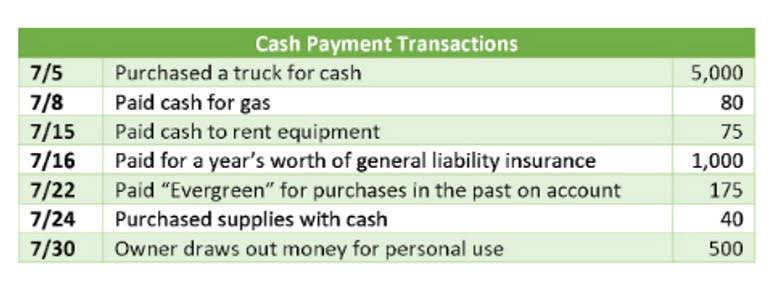
For a non-profit organization, what are unrestricted net assets there are three classifications of assets for the purpose of financial reporting. Committed Fund Balances Committed fund balance represents formal constraints that have been placed on resources within fund balance through formal action of the government’s highest decisionmaking authority. The creation of this type of constraint is evidenced by formal governing board actions (e.g., legislation, resolution, or ordinance) that can only be changed by an equivalent action. When transferring funds from restricted to unrestricted status, the journal entry should debit the restricted net assets and credit the unrestricted net assets. This reflects the satisfaction of the restriction, allowing the funds to be used for general purposes. Fund Accounting is a central aspect of nonprofit accounting, where resources are categorized into funds based on restrictions imposed by donors or the board.
Managing Donor-Imposed Restrictions
Understanding how to manage and report these assets is essential for maintaining financial health and transparency. Most of the organizations receive unrestricted revenues through donations, fees for services, investment income, ticket sales, or membership income. Through these funds, the organizations can pay off their current expenses as well as look around for other programs or projects that might exist. Restricted assets can be defined as any gift or donation received by a not-for-profit organization that comes with a legal restriction from the donor on what activities the said donation can be spent on. Restricted fund balance primarily represents those resources within fund balance for which constraints exist that cannot be changed or redirected by management. An operating reserve is an unrestricted and relatively liquid portion of a not-for-profit’s net assets.

For example, releasing a large sum of temporarily restricted net assets at the end of a fiscal year can significantly alter the organization’s financial position. It is important for financial managers to strategically plan these releases to align with the nonprofit’s financial goals and reporting periods. This strategic planning ensures that the organization can demonstrate effective use of funds while maintaining a stable financial outlook. When managing net assets released from restrictions, nonprofits must adhere to specific accounting practices to ensure transparency and accuracy. The process begins with recognizing when the https://www.bookstime.com/ conditions tied to temporarily restricted net assets have been met. This recognition is crucial as it triggers the reclassification of these funds from temporarily restricted to unrestricted net assets.
- When transferring funds from restricted to unrestricted status, the journal entry should debit the restricted net assets and credit the unrestricted net assets.
- On the other hand, unrestricted net assets are not subject to any specific restrictions and can be utilized at the discretion of the organization’s management.
- Establishing clear policies for the use and replenishment of reserve funds can ensure that they are available when most needed.
- This involves engaging with various departments within the organization to understand their financial requirements and aligning these needs with the nonprofit’s mission and objectives.
- These funds can be used to support professional development, improve working conditions, and invest in tools and technologies that enhance productivity.
For example, a donor might specify that their contribution be used for a particular program within the next fiscal year or for a capital project that will be completed over several years. The temporary nature of these restrictions requires careful tracking and reporting to ensure compliance with donor intentions. Organizations often use these funds to support targeted initiatives, such as research projects, scholarships, or community outreach programs. Proper management of temporarily restricted net assets is crucial for maintaining donor trust and ensuring that resources are used effectively.
Catégorie: Bookkeeping | Tags:
Contribution Margin: What it is and How to Calculate
Selecting the right business success metrics will give you clarity, guide strategic decisions, and highlight areas for growth. Customer lifetime value (CLV) is a key metric that measures the total revenue a business can expect from a customer throughout the time they remain a customer. By knowing the potential revenue from each customer, companies can enhance marketing strategies, personalize customer experiences, and optimize marketing budgets. Monthly recurring revenue measures the predictable revenue that a company expects to generate from its customers every month for offering a product or service.
- A contribution margin represents the money made by selling a product or unit after subtracting the variable costs to run your business.
- In fact, we can create a specialized income statement called a contribution margin income statement to determine how changes in sales volume impact the bottom line.
- As you will learn in future chapters, in order for businesses to remain profitable, it is important for managers to understand how to measure and manage fixed and variable costs for decision-making.
- Return on assets is a metric that measures how well a company uses its assets to generate a profit.
- This is because the contribution margin ratio indicates the extent to which your business can cover its fixed costs.
- Business metrics are measurable indicators that help business owners track and analyze the company’s performance across different areas like finance, sales, marketing, and customer satisfaction.
This is one reason economies of scale are so popular and effective; at a certain point, even expensive products can become profitable if you make and sell enough. Fixed costs are one-time purchases for things like machinery, equipment or business real estate. Thus, to arrive at the net sales of your business, you need to use the following formula.
Instead, management uses this calculation to help improve internal procedures in the production process. The contribution margin is computed as the selling price per unit, minus the variable cost per unit. Also known as dollar contribution per unit, the measure indicates how a particular product contributes to the overall profit of the company. Metrics help highlight both growth opportunities and areas that need attention. For instance, if the data shows that a particular product line is generating the highest profit margins, businesses can focus more on promoting it.
Doing this break-even analysis helps FP&A (financial planning & analysis) teams determine the appropriate sale price for a product, the profitability of a product, and the budget allocation for each project. However, they will play an important part in calculating the net income formula. Diversity and inclusion KPIs measure the workforce diversity within the company and ensure equal opportunities to foster a positive workplace culture where everyone feels valued, respected, and empowered.
Popular degree programs at the Munich Business School
Selling products at the current price may no longer make sense, and if the contribution margin is very low, it may be worth discontinuing the product line altogether. This strategy can streamline operations and have a positive impact on a firm’s overall contribution margin. Companies can use the contribution margin to allocate resources more efficiently by prioritizing those products or services that have a higher contribution margin and thus higher profitability. The contribution margin supports management in strategic decisions, such as the introduction of new products, the discontinuation of unprofitable products or the optimization of the production program.
How Do You Calculate Contribution Margin Ratio?
Companies can use the contribution margin to identify which prices are required to at least cover the variable costs and contribute to covering the fixed costs. In our example, the sales revenue from one shirt is \(\$15\) and the variable cost of one shirt is \(\$10\), so the individual contribution margin is \(\$5\). This \(\$5\) contribution margin is assumed to first cover fixed costs first and then realized as profit. Break-even analysis is essential for navigating economic fluctuations or market uncertainties. During downturns, companies may explore reducing fixed costs or increasing the contribution margin ratio through cost-cutting to lower the break-even point.
Thinking of Using a Personal Loan for Your Business? Here’s Everything You Need to Consider.
- Recall that Building Blocks of Managerial Accounting explained the characteristics of fixed and variable costs and introduced the basics of cost behavior.
- This is the net amount that the company expects to receive from its total sales.
- Using the provided data above, we can calculate the price per unit by dividing the total product revenue by the number of products sold.
- However, an understanding of the difference between fixed and variable costs is necessary before trying to understand how contribution margin is calculated.
- Companies use market research and elasticity analysis to find optimal pricing strategies that maximize profitability while remaining competitive.
Contribution margin 3 is calculated by deducting from CM2 the other fixed costs that are incurred at company level and cannot be directly allocated to a specific area. Let’s examine how all three approaches convey the same financial performance, although represented somewhat differently. As mentioned above, the contribution margin is nothing but the sales revenue minus total variable costs. Thus, the following structure of the contribution margin income statement will help you to understand the contribution margin formula.
Contribution Margin: What it is and How to Calculate it
The fixed costs for a contribution margin equation become a smaller percentage of each unit’s cost as you make or sell more of those units. Consider its name — the contribution margin is how much the sale of a particular product or service contributes to your company’s overall profitability. Fixed costs are the costs that do not change with the change in the level of output. In other words, fixed costs are not dependent on your business’s productivity. So, you should produce those goods that what happens if you can’t pay your taxes generate a high contribution margin.
With the help of advanced artificial intelligence, Sling lets you set projected labor costs before you schedule your employees so you know what the wage ceiling will be before putting names to paper. Once those values are set, you can create the perfect schedule the first time through…without going over your labor budget. Let’s say your business sold $2,000,000 in product during the first quarter of the year.
Key Takeaways
In other words, contribution margin per unit is the amount of money that each unit of your product generates to pay for the fixed cost. Accordingly, the contribution margin per unit formula is calculated by deducting the per unit variable cost of your product from its per unit selling price. Variable debit left credit right costs are not typically reported on general purpose financial statements as a separate category.
Thus, the total variable cost of producing 1 packet of whole wheat bread is as follows. Thus, you need to make sure that the contribution margin covers your fixed cost and the target income you want to achieve. This metric is typically used to calculate the break even point of a production process and set the pricing of a product. They also use this to forecast the profits of the budgeted production numbers after the prices have been set. A low margin typically means that the company, product line, or department isn’t that profitable.
Track Both Leading and Lagging Indicators
Fixed and variable costs are expenses your company accrues from operating the business. You can even calculate the contribution margin ratio, which expresses the contribution margin as a percentage of your revenue. In May, \(750\) of the Blue Jay models were sold as shown on the contribution margin income statement. When comparing the two statements, take note of what changed and what remained the same from April to May. There are times when a low contribution margin ratio is acceptable, such as during brief sales periods meant to generate interest in a product. Put more simply, a contribution margin tells you how much money every extra sale contributes to your total profits after hitting a specific profitability point.
The ratio is particularly valuable for businesses with multiple product lines, enabling comparative analysis of profitability. If another product has a contribution margin ratio of 30%, the company may prioritize the higher-margin product, assuming demand and strategic goals align. Both variable and fixed costs are considered in the calculation of different types of margins, including contribution margins.
The Indirect Costs are the costs that cannot be directly linked to the production. Indirect materials and indirect labor costs that cannot be directly allocated to your products are examples of indirect costs. Furthermore, per unit variable costs remain constant for a given level of production.
Use contribution margin alongside gross profit margin, your balance sheet, and other financial metrics and analyses. This is the only real way to determine whether your company is profitable in the short and long term and if you need to make widespread changes to your profit models. xero review If you were to manufacture 100 new cups, your total variable cost would be $200. However, you have to remember that you need the $20,000 machine to make all those cups as well.
By analyzing MRR, businesses can spot growth opportunities, forecast future income, and make strategic decisions. The interesting thing about contribution margin ratio is that you can perform the calculation anytime to achieve a unique view into your business. Because to really understand your business, you have to control your contribution margin ratio. Should the product be viewed as more of a “loss leader” or a “marketing” expense? The higher a product’s contribution margin and contribution margin ratio, the more it adds to its overall profit.
Here, we are calculating the contribution margin on a per-unit basis, but the same values would be obtained if we had used the total figures instead. Next, the CM ratio can be calculated by dividing the amount from the prior step by the price per unit. We’ll next calculate the contribution margin and CM ratio in each of the projected periods in the final step. The greater the contribution margin (CM) of each product, the more profitable the company is going to be, with more cash available to meet other expenses — all else being equal. Another common example of a fixed cost is the rent paid for a business space. A store owner will pay a fixed monthly cost for the store space regardless of how many goods are sold.
Catégorie: Bookkeeping | Tags:
ADP vs Quickbooks Payroll Services 2025 Comparison
That includes transferring your company’s existing payroll data to their system. Your new payroll service will be up and running in the shortest time possible. ADP takes the cake when it comes to advanced features and customizability.
QuickBooks Online Payroll works for small to midsize businesses—from accountants and financial experts to hospitality companies, construction companies, and truckers. Includes ADP’s latest HR tools such as live HR support, employee handbook wizard, proactive compliance alerts, HR guidance and forms, and a job description wizard. Turn on GPS to see your employee’s location any time they’re on the clock.
- But after three months, the fee will increase to USD 80 per month + USD 8 for each employee.
- ADP specializes in payroll and HR services, offering payroll processing, tax filing, and benefits administration.
- Offers 24/7 chat support and phone support from Monday to Friday; also has a community forum.
- Since running a business and handling several employees and contractors can be overwhelming, many businesses automate their operations, including payroll management.
- If you run into any issues, you can reach out to their 24/7 customer support at any time.
Integrations — Winner: ADP Run
If you’re an HR manager or business owner trying to choose between them, or looking for something better, this guide lays it out clearly. We compare ADP payroll and Intuit QuickBooks payroll features, discuss their integrations, user experience, customer support, and pros and cons. By the end of this article, you’ll know exactly what you can get with these two software options, and what you might be missing. The Premium plan has the added benefit of same-day direct deposit, as opposed to next day in the Core plan. With the plan, you’ll also have access to an HR support center and receive workers’ compensation administration. Like ADP’s RUN, Intuit Online Payroll offers employees online access to view their information, including paycheck details, as well as to download W2s.
If you think QuickBooks Payroll is right for your business, you can get started with QuickBooks Online Payroll. QuickBooks Payroll has a free trial and doesn’t have locked-in contracts like ADP, so you can leave the service at any time. Many, or all, of the products featured on this page are from our advertising partners who compensate us when you take certain actions on our website or click to take an action on their website. If you invoke the guarantee, QuickBooks will conduct a full n evaluation of the Live Bookkeeper’s work.
ADP RUN is the best option if you’re searching for a payroll tool that lets you personalize your payroll package and offer HR and payroll support. QuickBooks Payroll, on the other hand, is a better choice if you’re looking for a platform that’s simpler to use and won’t require as many add-ons for payroll management. ADP’s higher-tiered plan are loaded with administration adp vs intuit benefits like worker’s compensation, retirement, and health insurance.
Join millions of customers globally
Choose your date range and download the report from there (on the app or desktop).Recent reviews cite long wait times over the phone for customer service. When I called the general line, I shared my details and got a specific number to dial. With the app, you can complete payroll processing, view reports like payroll liability and access or update employee 1099 info. Its intuitive design is great for users with little to no experience in most cases. It might be pricier than some alternatives, but most users find the added cost valid, considering its user-friendly interface, payroll automation and mobile app features.
- On the other hand, setup is also a breeze with QuickBooks Payroll, thanks to their online setup wizard.
- It supports both US and global payroll, making it easy to pay employees and contractors worldwide.
- QuickBooks Payroll is also easy to use, with its live expert guidance, expert review and support, 24/7 chat service and robust knowledge database, making it easy to navigate, even for first-time users.
Email support
Under either subscription, Intuit charges an additional $1.50 monthly fee for each employee you pay. On top of that, Intuit Online Time Tracking, at a cost of $3 per month per employee, will track hours either via online timesheets that employees can edit, or through a multiuser online time clock. While ADP promises two-day direct deposits, QuickBooks also provides same-day and next-day direct deposits. ADP RUN is missing some functionality from QuickBooks, such as vacation tracking and multicurrency compatibility for overseas payroll. It’s also suitable for scaling businesses, since you can customize your plans to cater to even more than 50 employees. Plus, you can integrate with several apps to get all your business operations in one place.
Where QuickBooks Payroll Falls Short
Evaluate QuickBooks alongside FreshBooks and discover which solution best fits your company’s accounting and operational requirements. Quickbooks was glitching too often for us and getting through to customer service was always a chore and a half. RUN has helped us to run reports and gather information we need easier and quicker.
Compare packages for your business needs to decide which payroll plan fits best. ADP’s suite of user-friendly tools include advanced state unemployment insurance management tools. Some platforms handle tax filing differently, some offer more integrations, and others have clunky systems that slow you down.
There’s direct deposit for paying your employees and additional options like Wisely Direct (an ADP-exclusive debit card) and ADPCheck. Unlike the Intuit competitor, however, RUN gives both employers and employees access to payroll information via online access and mobile apps. RUN keeps all of the company configuration and global settings in a Company section, for contact and direct-deposit account information. You can also define default policies for pay frequency, taxes, earnings deductions, paid time-off, and workers’ compensation. Intuit’s wizard-style setup interface asks about your pay schedule, direct deposit information, and vacation/sick-time policies. You can also input older payroll data if you’ve used another payroll system in the past.
Unfortunately, you’ll have to contact ADP Run to know how much these plans cost. Just like QuickBooks Payroll, you can pay for add-ons if you need them. Both streamline the payroll process for small businesses, leaving you with fewer things to worry about.
TOP-RATED PAYROLL, HR, & MORE
However, time tracking is only available for ADP RUN users as an add-on. Our simple, automated solution makes it easy to process payroll and taxes in minutes from any device, anywhere. And we offer dedicated new client onboarding support for small businesses of all sizes. I was looking for great payroll but also to add other services like workers’ compensation quotes, business insurance, retirement accounts, and other features all through one solution. QuickBooks was fine with payroll but didn’t have the ability to add benefits easily.
In addition to this, I watched an instructional video from QuickBooks’ official YouTube channel. This video provided a step-by-step guide on how to use the software effectively, helping me understand the setup process and key functionalities in greater detail. Manage everything from your personalized dashboard, including upcoming payrolls, to-dos, payroll history and quick access to all RUN features.
Catégorie: Bookkeeping | Tags:
How To Calculate Book Value Per Share From Balance Sheet
Therefore, the book value per share (BVPS) is a company’s net asset value expressed on a per-share basis. Means-tested benefits will also increase on Sunday – along with other benefits increases in April. Some of the poorest pensioners are also eligible for pension credit, a state pension income top-up.
 Date: May 3-4, 2025
Date: May 3-4, 2025 Time: 8:30-11:30 AM EST
Time: 8:30-11:30 AM EST Venue: OnlineInstructor: Dheeraj Vaidya, CFA, FRM
Venue: OnlineInstructor: Dheeraj Vaidya, CFA, FRM
Thence, if this company were to be liquidated on 31st March 2020, all its shareholders would be entitled to receive a portion of Rs. 160,000, according to their stake in that organisation. As suggested by the name, the “book” value per share calculation begins with finding the necessary balance sheet data from the latest financial report (e.g. 10-K, 10-Q). Therefore, the amount of how to set up an etsy shop cash remaining once all outstanding liabilities are paid off is captured by the book value of equity. « Older pensioners expecting a 4.1% increase to all of their state pension could be in for a nasty surprise, » says Rachel Vahey, head of public policy at AJ Bell.
Method to Increase Book Value Per Share.
By using book value per share to analyze a company’s financial health, investors can gain valuable insight into the company’s current and future prospects. This information can help them make informed decisions about whether or not to invest in the company. Book value per share is a useful tool for investors to assess the financial health of a company. It can help investors determine whether a company is undervalued or overvalued based on its net worth. It is important to note, however, that book value per share does not take into account intangible assets such as brand value, which can have a significant impact on a company’s overall value.
It is a measure of the company’s net worth, or the amount of money that would be left over if all of the company’s assets were sold and all of its liabilities were paid off. Book value per share is calculated by subtracting the company’s total liabilities from its total assets and then dividing the result by the number of outstanding shares. This figure gives investors an idea of how much the company is worth on a per-share basis. Book value per share is a financial metric used to measure the value of a company’s equity. It is calculated by dividing the company’s total book value by the number of outstanding shares.
Example of P/B Ratio Calculation
The price-to-book value ratio, also known as the price-equity ratio, is also derived from the book value of an organisation. P/B ratio shows the relationship between a company’s market capitalisation and its book value. Repurchasing 500,000 common stocks from the company’s shareholders increases the BVPS from $5 to $6.
- The book value per share (BVPS) is a ratio that weighs stockholders’ total equity against the number of shares outstanding.
- We also round up a raft of measures announced by the government last year that are about to take effect, and reveal the cheapest supermarkets.
- In the example from a moment ago, a company has $1,000,000 in equity and 1,000,000 shares outstanding.
- It might be due to its enhanced earnings, well-founded and sound management, or any other factor that buoys its market worth.
- Besides his extensive derivative trading expertise, Adam is an expert in economics and behavioral finance.
- This ratio does not consider intangible assets, which are an integral part of many companies.
When comparing book value per share ratios between companies, investors should consider the industry in which the companies operate. Different industries have different asset and liability structures, so a company’s book value per share ratio may not be comparable to another company in a different industry. If a company’s BVPS is higher than its market value per share (the current stock price), the stock may be considered undervalued. This situation suggests a potential buying opportunity, as the market may be undervaluing the company’s actual worth.
Uses of BVPS
On the other hand, book value per share is an accounting-based tool that is calculated using historical costs. Unlike the market value per share, the metric is not forward-looking, and it does not reflect the actual market value of a company’s shares. Similarly, if the company uses $200,000 of the generated revenues to pay up debts and reduce liabilities, it will also increase the equity available to common stockholders. A company can also increase the book value per share by using the generated profits to buy more assets or reduce liabilities. For example, if ABC Limited generates $1 million in earnings during the year and uses $300,000 to purchase more assets for the company, it will increase the common equity, and hence, raise the BVPS. However, the market value per share—a forward-looking metric—accounts for a company’s future earning power.
What Is Payables Turnover and How Is It Calculated?
- As you can see there is a heavy focus on financial modeling, finance, Excel, business valuation, budgeting/forecasting, PowerPoint presentations, accounting and business strategy.
- For companies seeking to increase their book value of equity per share (BVPS), profitable reinvestments can lead to more cash.
- Trump dubbed the move “Liberation Day” and claimed his expansive use of tariffs will cause factories to move production back to the United States, ushering in a golden era for the U.S. economy.
- The book value of a company is based on the amount of money that shareholders would get if liabilities were paid off and assets were liquidated.
- The norm for the P/B varies by industry, but a P/B ratio under 1.0x tends to be viewed favorably and as a potential indication that the company’s shares are currently undervalued.
If the company generates $500,000 in earnings and uses $200,000 of the the rules for deducting business expenses on federal taxes profits to buy assets, then its common equity increases along with BVPS. If XYZ uses $300,000 of its earnings to reduce liabilities, then common equity also increases. The price to book ratio, often abbreviated as the “P/B ratio”, compares the current market capitalization (i.e. equity value) to its accounting book value. To calculate the book value per share, you must first calculate the book value, then divide by the number of common shares. Also, since you’re working with common shares, you must subtract the preferred shareholder equity from the total equity. Breaking down the book value on a per-share may help investors decide whether they think the stock’s market value is overpriced or underpriced.
If the value of BVPS exceeds the market value per share, the company’s stock is deemed undervalued. The book value per share (BVPS) is a ratio that weighs stockholders’ total equity against the number of shares outstanding. In other words, this measures a company’s total assets, minus its total liabilities, on a per-share basis.
What is Price to Book Ratio?
For example, let’s say that ABC Corporation has total equity of $1,000,000 and 1,000,000 shares outstanding. This means that each share of stock would be worth $1 if the company got liquidated. To calculate book value per share, simply divide a company’s total common equity by the number of shares outstanding. For example, if a company has total common equity of $1,000,000 and 1,000,000 shares outstanding, then its book value per share would be $1. We deduct preferred stock from the shareholders’ equity because preferred shareholders are paid first after the debts are paid off.
Helen has worked in a wide range of different sectors, including health and wellness, sport, digital marketing, home design and finance. Helen aims to ensure our community have a wealth of quality content to read and enjoy. InvestingPro offers detailed insights into companies’ Book Value Per Share including sector benchmarks and competitor analysis.
What is Book Value per Share and How to Calculate It
It serves as a baseline for deeper analyses, such as comparing book value to market value. This comparison can reveal discrepancies that signal undervaluation or overvaluation in the stock market. For example, a stock trading below its book value might indicate market pessimism or temporary challenges, while a higher market value could reflect optimism about future earnings.
Unlocking Potential: How In-Person Tutoring Can Help Your Child Thrive
Investors often use financial ratios to analyze and compare stocks before making investment decisions. Understanding this ratio can help investors determine whether a stock is undervalued or overvalued based on the company’s book value. In this blog, we will explore the price-to-book (P/B) ratio in detail, covering its meaning, formula, and key advantages and limitations to help you better evaluate a company’s valuation. When analyzing a company’s financial health, it is important to compare the book value per share to the current market price of the stock.
Understanding how book value per share is calculated highlights a company’s financial health and stability. This calculation reflects the tangible assets available to shareholders after liabilities are settled. The book value of a company is based on the amount of money that shareholders would get if liabilities were paid off and assets were liquidated. The market value of a company is based on the current stock market price and how many shares are outstanding. Since public companies are owned by shareholders, this is also known as the total shareholders’ equity. The book value includes reorder points all of the equipment and property owned by the company, as well as any cash holdings or inventory on hand.
Catégorie: Bookkeeping | Tags:

 Service commercial : 01 80 88 43 02
Service commercial : 01 80 88 43 02